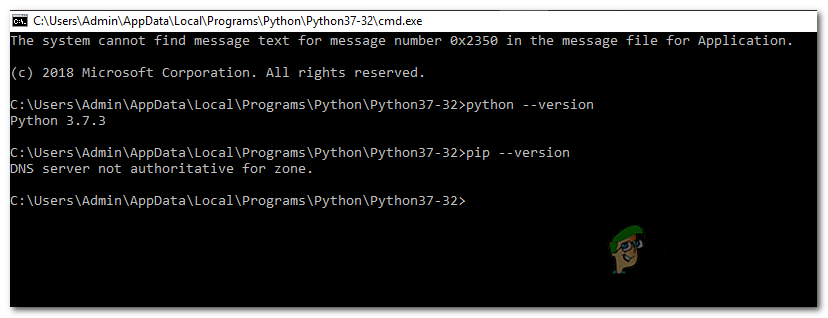What’s causing the ‘DNS Server Not Authoritative for Zone’ Error and How to Fix it?
1. Running SFC and DISM scans
As it turns out, most instances of the ‘DNS Server Not Authoritative for Zone’ error are actually being caused by a corrupt system file or a registry inconsistency. A lot of affected users that were encountering this problem have reported that the issue was fixed entirely after they used a couple of built-in utilities that are capable of resolving system file corruption – SFC (System File Checker) and DISM (Deployment Image Servicing and Management). Keep in mind that SFC and DISM have different approaches when it comes to fixing system file corruption. That’s why it’s ideal to use the two together. SFC is better at fixing logical errors and it relies on a locally stored cache to replace corrupted files with healthy ones. DISM relies on the WU (Windows Update) component to replace corrupted files by downloading them over the Internet. To make sure you maximize your chances of success, we encourage to run both in quick succession. Here’s how: In case the same ‘DNS Server Not Authoritative for Zone’ error is still occurring, move down to the next potential fix below.
2. Running CHKDSK scan
Another potential cause that might end up causing this issue is a disk error that might end up affecting your OS ability to use certain terminal functions. If this scenario is applicable, you can fix the issue by running a CHKDSK scan. This procedure will scan the integrity of the file system and the system metadata looking for any kind of logical file system errors that might trigger this issue. In the event that it finds, them the CHKDSK utility will use healthy sectors to replace bad ones. A corrupted volume’s master file table, bad security descriptors or a misaligned time stamp can all contribute to the apparition of the ‘DNS Server Not Authoritative for Zone’ error. Here’s a quick guide on running the CHKDSK scan on the affected computer in order to fix the issue: In case you’re still encountering the same error message, move down to the next potential fix below.
3. Performing a repair install / clean install
If none of the methods above have allowed you to fix the issue, chances are you’re dealing with some time of system corruption that cannot be fixed conventionally. In this case, your only hope of fixing the issue is to reset every Windows component. This can be achieved with a couple of different approaches:
Clean install – This is an easier procedure since you can initiate it directly from the Windows menus without an installation media. But the major downside is that unless you backup your data in advance, you will lose all your data including personal media, documents, applications, and games.Repair install (in-place repair) – Going this route is more tedious and you will need to use an installation media. But the major advantage is that you will be able to keep every personal data including games, applications and personal media.
Note: Here’s how to create a USB installation media for your Windows 10, in case you don’t have one ready.
Resolve Error 0x3A98 when Generating WlanReport via CMDCS:GO Danger Zone’s New “Sirocco” Update is Heavily Inspired By Apex LegendsHow to Change the Time Zone in GmailUnderstanding DMZ - Demilitarized Zone


